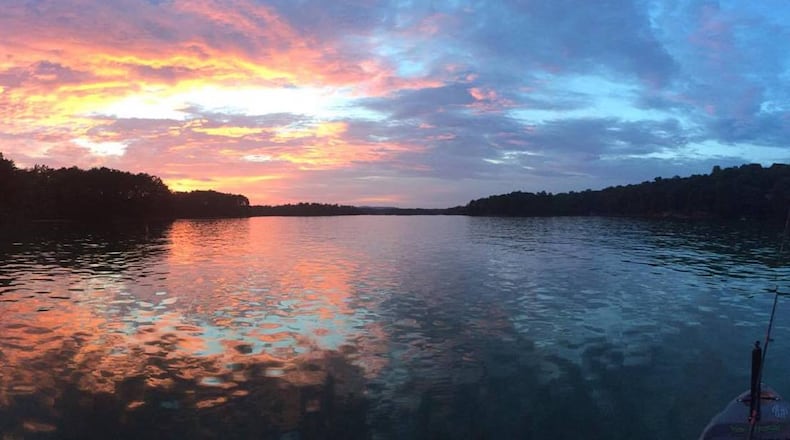The millions of people who get their drinking water from Lake Lanier could notice a weird taste or odor when they turn on their faucets, according to a local organization that monitors water quality.
The Chattahoochee Riverkeeper recently collected water samples at Lanier that showed high levels of chlorophyll, which can point to an overabundance of algae blooms from pollution.
In addition to affecting the smell and taste of water even after treatment, too much algae can raise the cost of treating drinking water, leading to customers paying a higher water bill. It also decreases the amount of oxygen in the water needed by fish and other aquatic life to survive. In addition to algae, natural processes can also affect the water’s smell and taste as the weather warms up, but it’s still safe to consume.
While the lake had its highest recorded levels of chlorophyll in 2019, in 2020 levels still exceeded limits set by Georgia’s Environmental Protection Division. The levels over the past two years are the highest they’ve been since the EPD started testing Lake Lanier in 2000.
The pollution comes from a variety of sources, including stormwater runoff from fertilizers used on lawns and farms, treated sewage discharges, failing septic systems and clogged sewer pipes from improperly disposing fats, oils and grease.
“All these things may seem minor in nature, the mentality that, ‘Putting fertilizer on my lawn isn’t a big deal,’” said Dale Caldwell, headwaters director of Chattahoochee Riverkeeper. “Multiply that by thousands or millions (of people) and you start to have a significant impact.”
“It’s one of those situations where we can’t have our cake and eat it, too,” Caldwell said. “If we want to improve the situation, reduce pollution, use the best available technologies and keep up with maintenance, there’s a cost to all of that in society. You get what you pay for with these manmade infrastructure systems,” Caldwell said.
While it’s impossible to physically remove the algae already present in the lake, the solution lies in improving the lake’s water, Caldwell said. The Chattahoochee Riverkeeper is working with local governments, utilities and other stakeholders to address the problem, meeting this spring to address a 2018 federal cleanup plan to improve water quality.
These agencies play an important role in resolving the issue, but local residents share in the responsibility to lower the level of pollution in runoff water, Caldwell said. People should limit the amount of fertilizers they put on their lawns, routinely maintain their septic systems and avoid pouring fats, oils and grease down the drain, he said.
Caldwell said some of the responsibility should also fall on industries who inadvertently contribute to pollution, finding creative solutions to continue their practices in more sustainable ways. The landscaping industry, in which he used to work, should consider weather and other variables when spraying fertilizer, he said.
“It doesn’t make sense to apply some of these things right before a large rain event where it’s all going to run off into the creeks anyway,” Caldwell said. “You wasted your money on the product, and it didn’t even serve its intended purpose (and) instead just caused pollution.”
About the Author
Keep Reading
Featured




